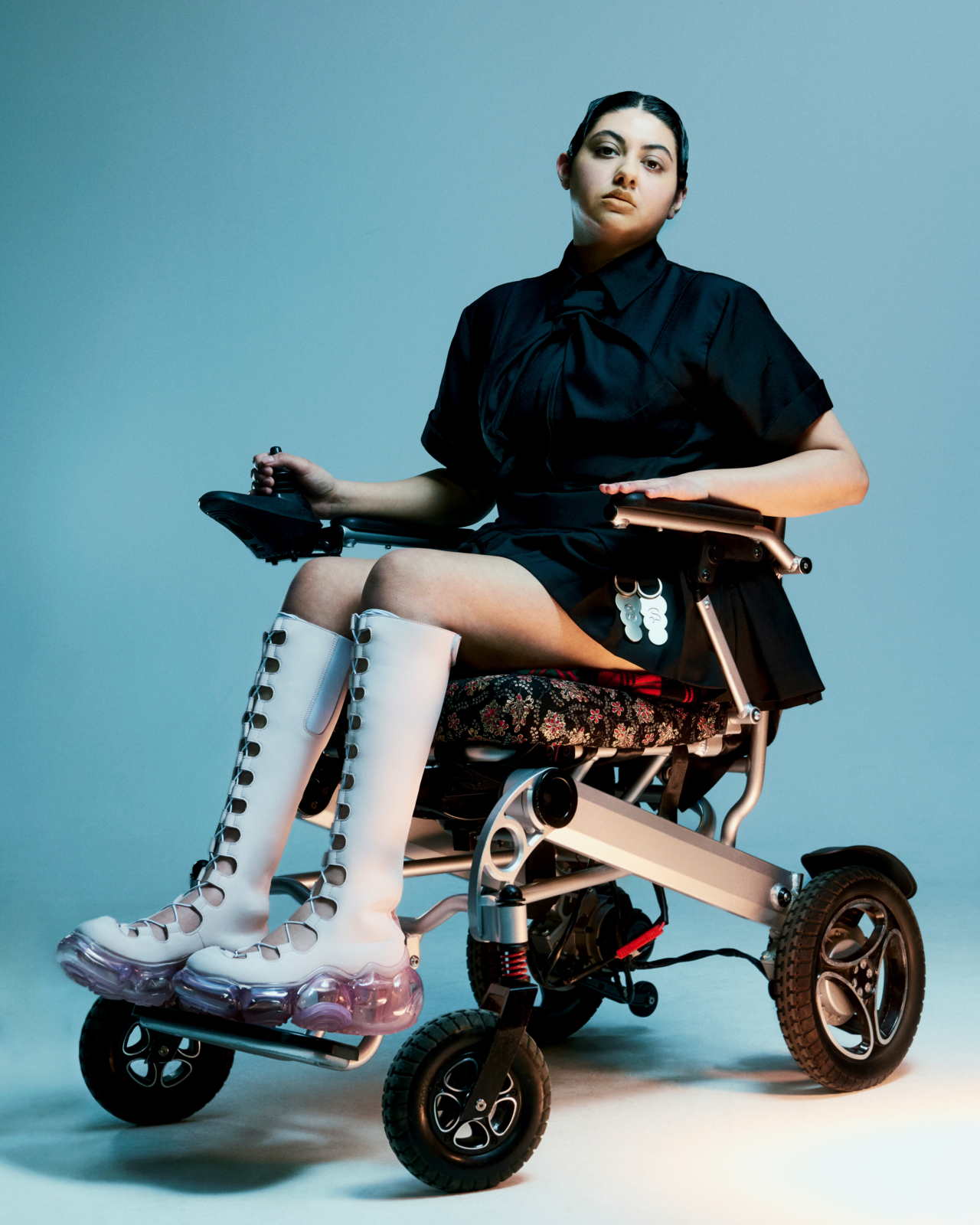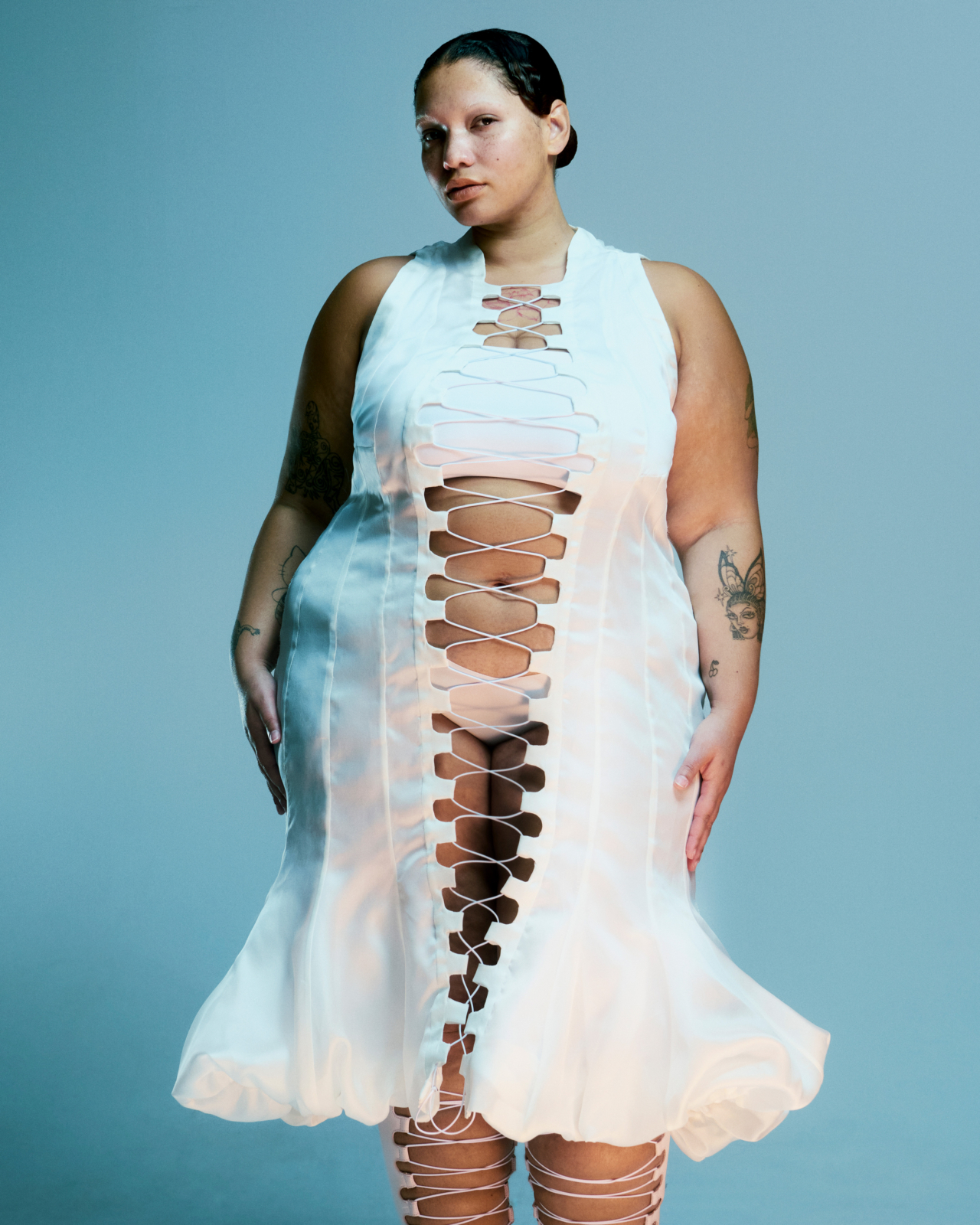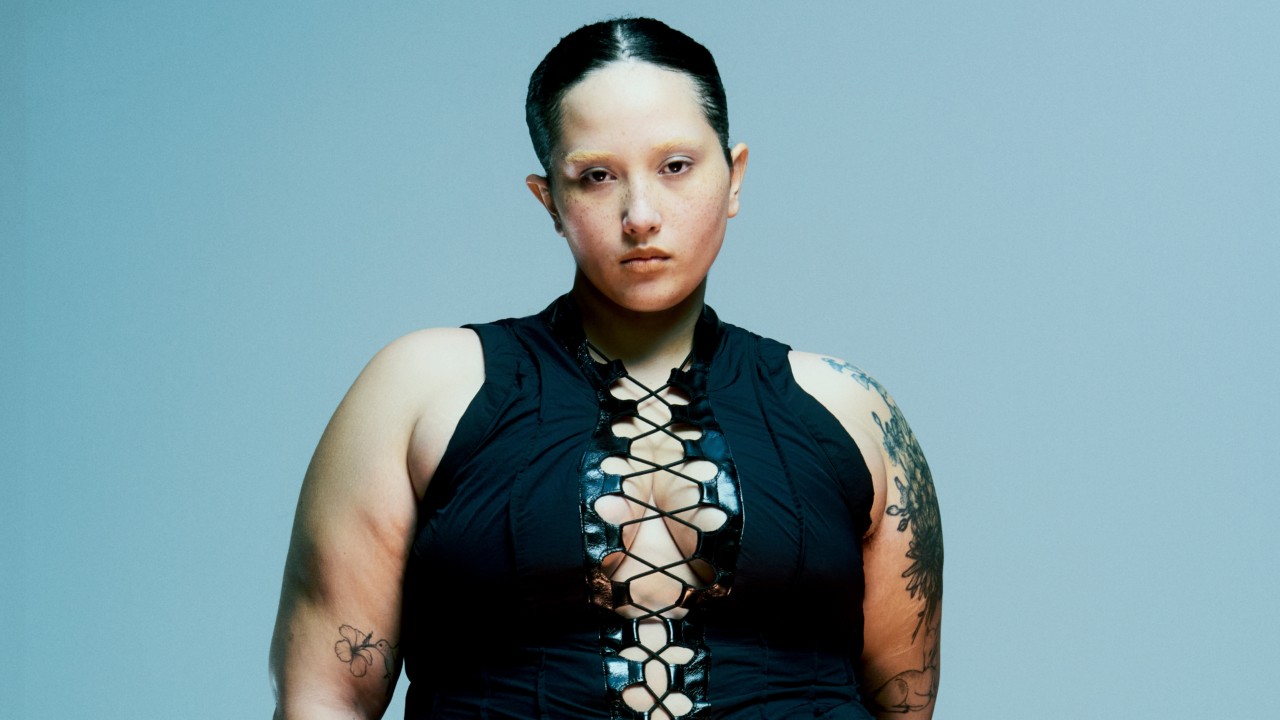
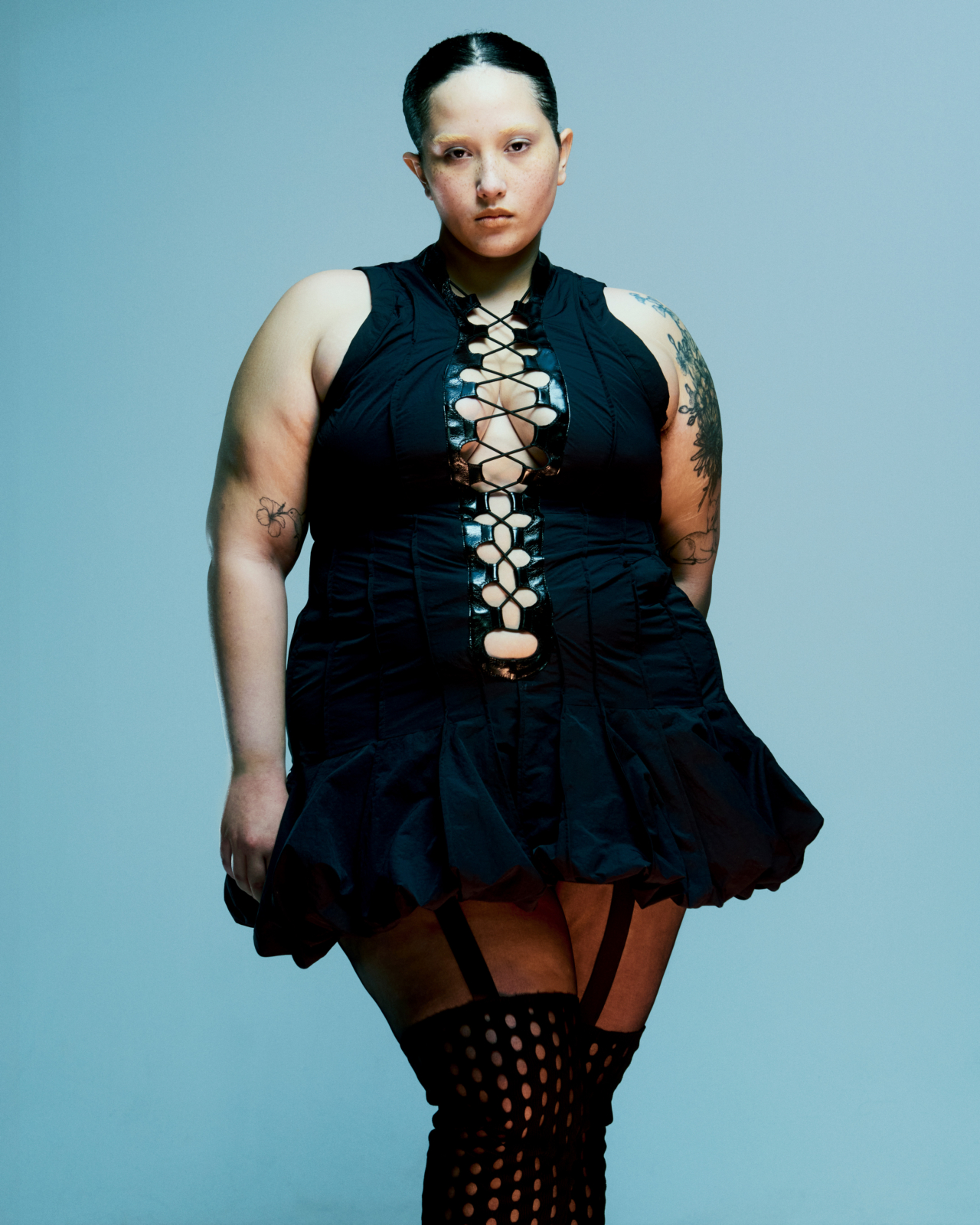
Photographs courtesy of Sinéad O’Dwyer
Words by Jake Hall
Collectively, we know fast fashion is terrible for the planet. We routinely scroll past images of once-beautiful deserts clogged with textile waste and rivers dyed the colors of last season’s trends, and many of us feel the need to take action to mitigate our collective impact. We want to shop more sustainably, to divest from companies churning out tons of clothing so shabbily made that it’s essentially single-use.
But if you’re plus-size, making these changes is hard. If you’re plus-size with little disposable income, it can feel impossible.
I know this firsthand. Last year, a wedding invitation requesting “formal wear” sent me into a panic. My wardrobe was colorful and casual, with nothing close to appropriate. I needed to buy something formal, sustainable, and within my limited budget. The handful of 3XL trouser suits I could find online were either unaffordable or not my style. In the end, I bought wide-leg trousers and paid extra to get them tailored. The jacket was another ordeal: too tight on the shoulders, but too wide at the torso, hanging awkwardly on my top-heavy frame. After multiple trips to a local tailor, I ended up wearing an outfit I might wear again, but only after jumping through multiple hoops and absorbing the cost of alterations.
These are luxuries not everyone can afford. For plus-size customers, shopping sustainably means navigating broken and exclusionary sizing systems, fewer choices, and higher prices. We can rifle through second-hand clothing stores in the hope of finding something that fits and looks good, or we can sift through the limited options online, trying desperately to avoid returns that often wind up in the Global South for resale or overflow landfill space, where garments further pollute landscapes and choke water systems.
Stephanie Yeboah, a plus-size influencer, journalist, and author, says the biggest challenge is “access,” both in terms of limited sizing and prohibitive prices. “When brands claim ‘inclusivity,’ extended sizes tend to be treated as an afterthought,” she said, adding that “sustainable fashion costs more; when plus-size pieces use more fabric and require different pattern grading, they’re often priced even higher. This can make ethical choices feel out of reach for someone who’s already limited in options.”
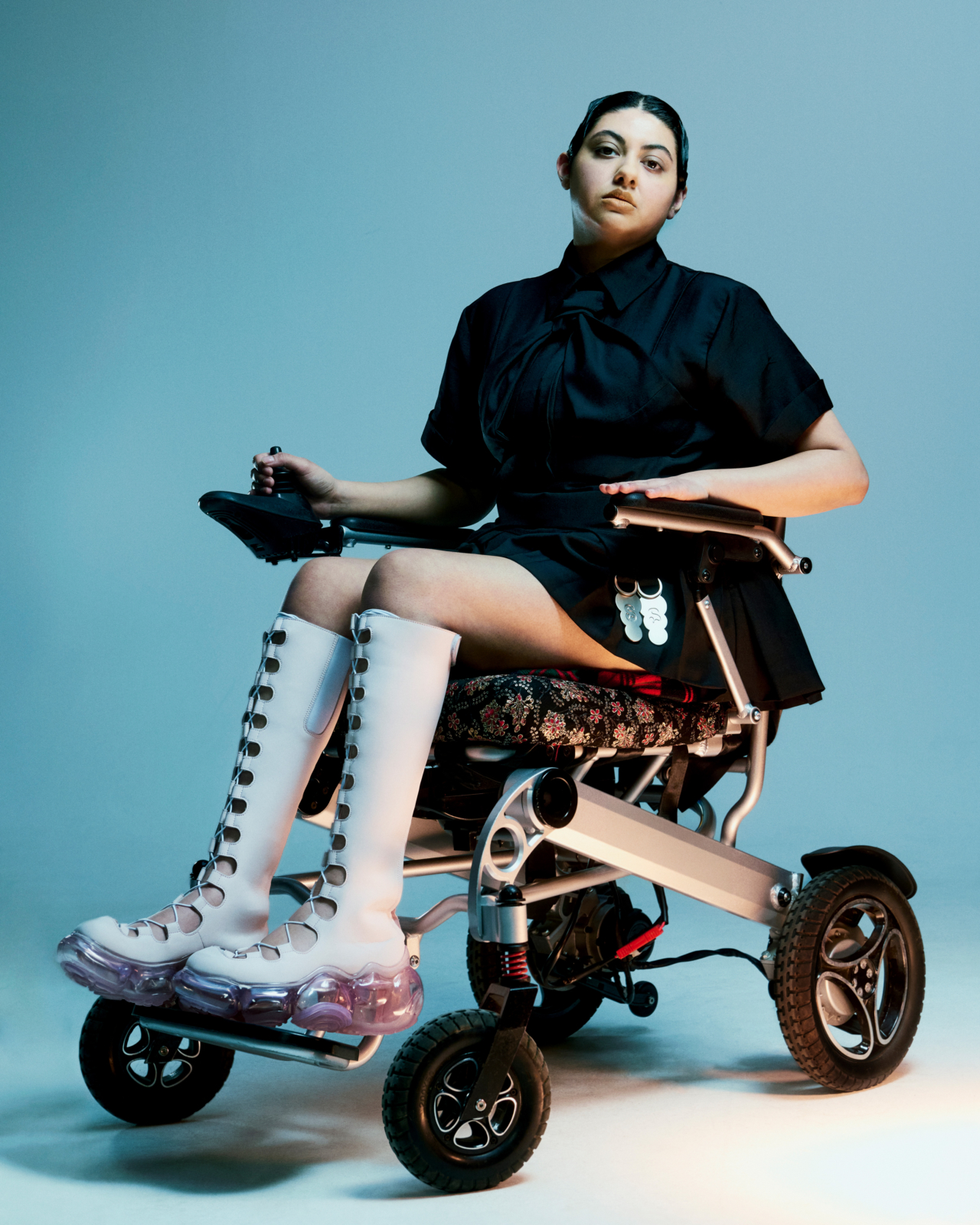
For Yeboah, these obstacles are compounded by the demands of content creation. “There’s always this pressure to show up with new hauls or fresh looks, and that doesn’t exactly line up with shopping sustainably,” she said. Influencer hauls have long been critiqued as a driving force of fast fashion’s massive pollution; it’s not uncommon for creators to buy huge quantities of brand-new clothing and unbox the packages on-camera, only to send them all back. Yeboah is one of many content creators using her platform to challenge the status quo, despite the difficulties of sourcing size-inclusive clothing that’s ethically made. “I really lean into restyling, which I think is sustainable in its own way,” she said. “It shows how much life one piece of clothing can actually have.”
Finding these gems often requires navigating digital storefronts. Sizing charts can be inconsistent at the best of times, but finding plus-size clothes that fit well is even harder. The reason is baked into the process. “Fast-fashion retailers grade their sizes on a curve,” said Lucinda Graham, a stylist and content creator whose eclectic style is rooted in sustainability. “That means the proportions of an XL garment are the same as an S, they’ve just been incrementally increased.” In practice, this “results in incredibly poor offerings—the bust will be tight, the waistband tight, but the thighs will gape.”
Some shoppers and stylists argue that clearer, more detailed size information could help. With so many purchases now made online, simple measurements like pit-to-pit width, waist, or thigh circumference could make a world of difference. In Graham’s eyes, the way sizes are currently designed and graded shape not only the wardrobes of plus-size women, but perceptions of them, too. “Plus-size customers get pigeonholed as ‘baddies,’ because the only acceptable, well-fitting clothes tend to be extremely tight,” she said. “It just reads as laziness on brands’ parts.”
And bad design further fuels returns. For years, online retailers have encouraged over-ordering through free returns and incentives for larger baskets, effectively baking waste into the system. But with rising shipping rates and incoming European Union rules that will require brands to absorb the cost of clothing waste, some companies are changing their ways—and return policies.
“Consumer actions are the direct result of what is offered to them by these major retailers. Customers are both the victim and perpetrator of the crime.”
Global brand ASOS rolled out an updated “fair use” policy this year targeting so-called “serial returners,” though the definition remains vague. The change drew swift backlash, with some shoppers calling it a “slap in the face.” ASOS did not respond to questions about the policy or how many returns would prompt its enforcement.
The controversy points to a deeper problem. If sizing were more consistent—and if returns were managed through a sustainable logistics process—the volume of waste would almost certainly shrink. “Consumer actions are the direct result of what is offered to them by these major retailers,” said Graham. “Customers are both the victim and perpetrator of the crime.” Still, she supports efforts to curb excessive returns, criticizing the habit of ordering multiple sizes of the same garment “just to see if they fit.” As she puts it: “We have completely lost the ability to think critically when it comes to patterns of consumption.”
But the industry is also changing for the better, albeit slowly. Sustainable fashion brands like Reformation now offer extended sizing ranges; and on the runways, slow fashion designers like Sinéad O’Dwyer and Karoline Vitto place plus-size bodies at the heart of their creative process. Graham also name-checks Taippe, an Irish Portuguese brand which produces in small batches and features textile machinists in their campaigns, while Yeboah references Angels Wear Nada, whose “pieces are timeless, ethically made, and designed with inclusivity in mind, which makes them a genuinely sustainable option for plus-size shoppers,” she said.
Meanwhile, the rise of “cottagecore” has coincided with a sewing revival, giving plus-size shoppers a practical way to make clothes fit when the market does not. Online, designer Lydia Bolton promotes repairing and refashioning old garments; Melbourne-based YouTuber Amy’s video roundup of plus-size sewing patterns garnered thousands of views.
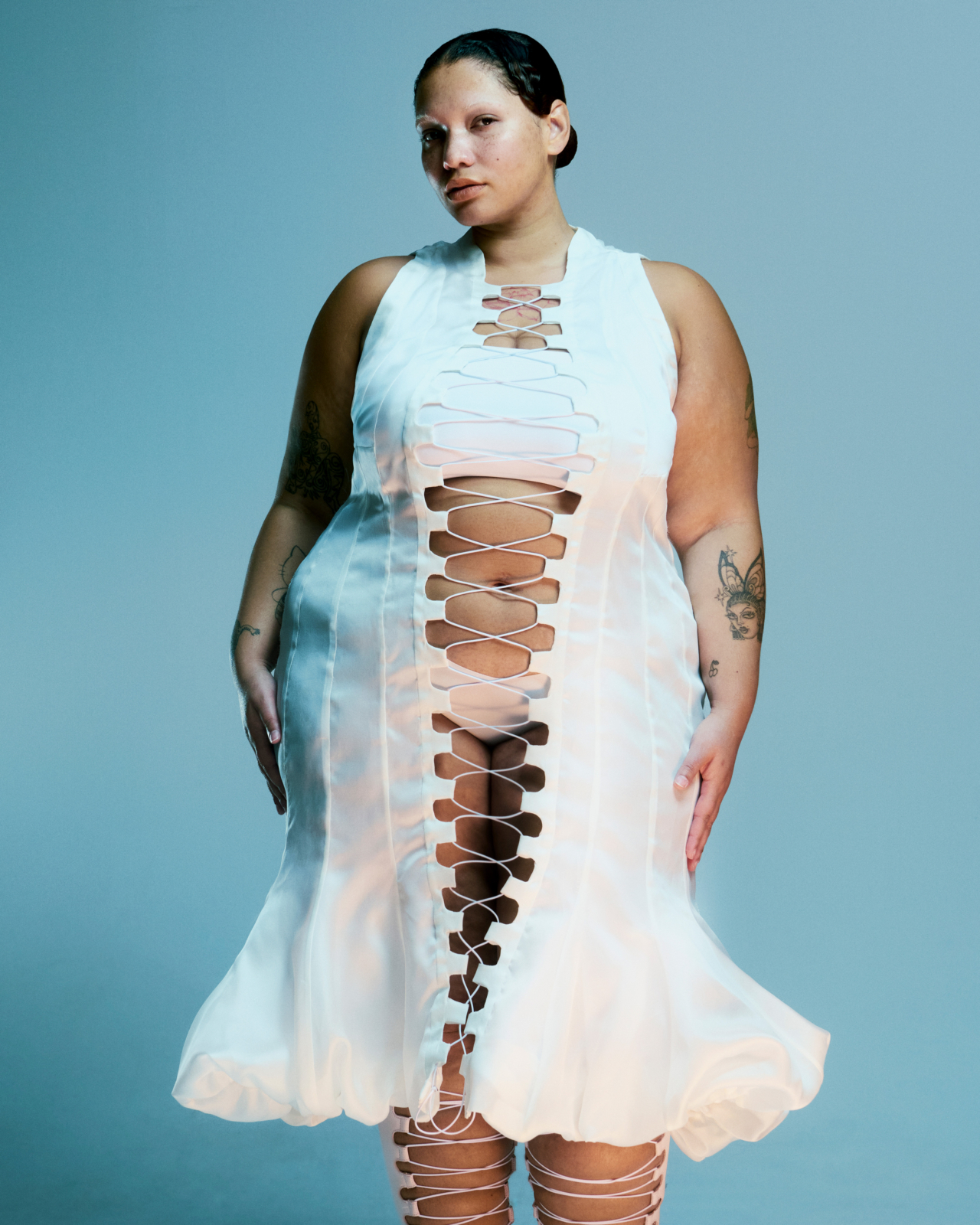
Still, these encouraging shifts can’t erase the industry’s long legacy of exclusion. Historically, most labels and designers didn’t cater to fat bodies for fear that doing so would sully their brand. That absence continues to shape today’s second-hand market. Graham recently scrolled through second-hand shopping app Vinted with her straight-size friend, who “couldn’t believe the [limited] range of options,” Graham said. With the rise of 1990s streetwear, bigger sizes are now also snapped up by much skinnier customers looking for a slouchy, “oversized” aesthetic. So when Graham stumbled upon Sloe Vintage in South London, a vintage store with “curated offerings for bigger bodies, [which were] actually modeled by plus-size people,” she was shocked. “I had been so used to seeing a tiny girl pulling at the fabric to body check on Depop,” she said.
It’s long been clear that shopping sustainably requires extra time, effort, and resources, especially if you’re plus-size. “I fear that in this current political climate, acceptance of plus-size bodies is being rolled back,” said Graham. “A lot of celebrities with larger bodies are losing drastic amounts of weight, and that continues to set a precedent in the Ozempic age that ‘nothing tastes as good as skinny feels.’” Weight-loss drugs are being hailed as a silver bullet and risk giving brands even more excuses not to cater to fat bodies. Many are already jumping on the bandwagon: Plus-size models last season accounted for only 0.3% of runway looks at major fashion weeks—down from 0.8% the season prior.
Fast fashion can’t be fixed overnight, but there are basic changes that could lower rates of clothing returns and enable plus-size customers to shop more sustainably. “If brands actually standardized sizing or provided more accurate, detailed measures, it would make such a huge difference,” said Yeboah. “It would save time and money, cut down on waste from returns and exchanges, and it would make shopping feel more accessible and less discouraging.” As it stands, buying clothes as a plus-size customer often means negotiating an industry that has long excluded larger bodies, which makes the already fraught landscape of sustainable fashion even harder to navigate.
“Sizing inconsistencies often make plus-size customers feel like the problem is their body, when really it’s the industry that’s more consistent,” Yeboah added. “Streamlining that process would take away so much of the frustration and make sustainable, long-term shopping choices much more realistic.”
Standardized Sizing Could Make Fashion Fairer—and Greener
